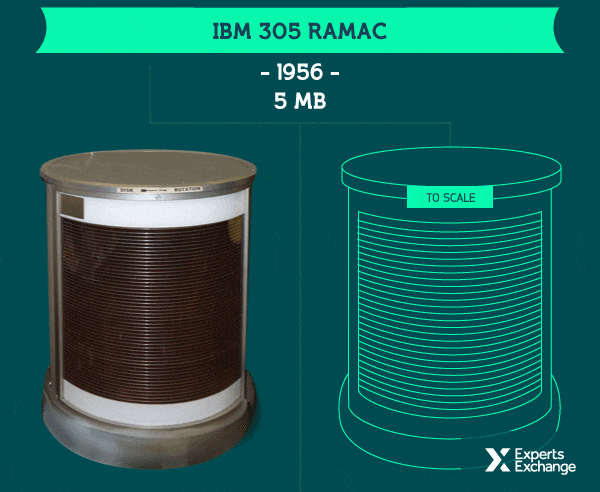You’ve probably heard we carry the equivalent of a 1980s supercomputer around in our pockets. It’s a pretty amazing thing to consider. And, as it turns out, it’s already outdated. Moore’s Law moves fast.
According to an astonishing infographic (below) documenting the trillion-fold increase in computing performance since 1956, it’s true that an iPhone 4 was roughly equivalent to a hefty Cray-2 supercomputer from 1985. Now, if you so desire, you could wear that Cray-2 on your wrist (Apple Watch). Meanwhile, a Samsung Galaxy S6 is the equivalent of 18 Cray-2 supercomputers in your pocket.
Storage too has risen exponentially, hard drives shrinking and their capacity moving skyward. In the 80s we measured storage in megabytes, today we measure it in terabytes. That’s millions of times more storage in the palm of your hand. (Watch the GIF above the infographic to see the transformation of hard disks.)
The infographic was compiled by the Experts Exchange, a network of IT professionals. Check out the full post here for more mind-bending computing comparisons and the research methodology behind them.
Credit: Experts Exchange; Shutterstock.com (banner image)





